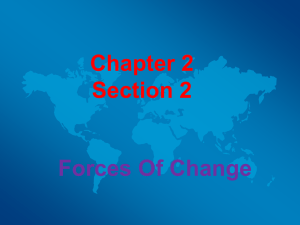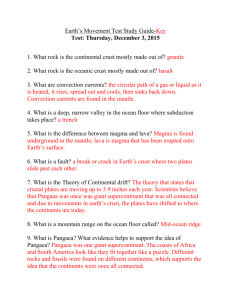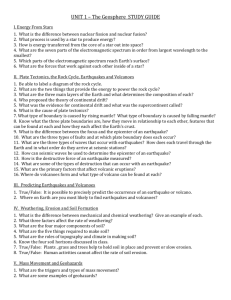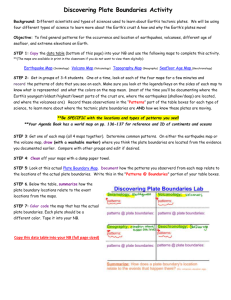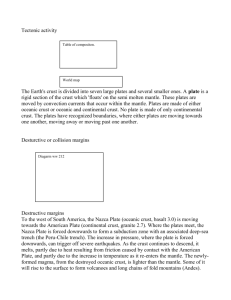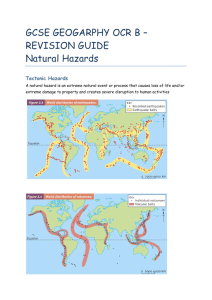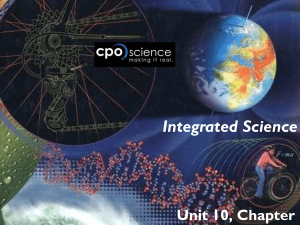Chapter 2 Study Guide
advertisement
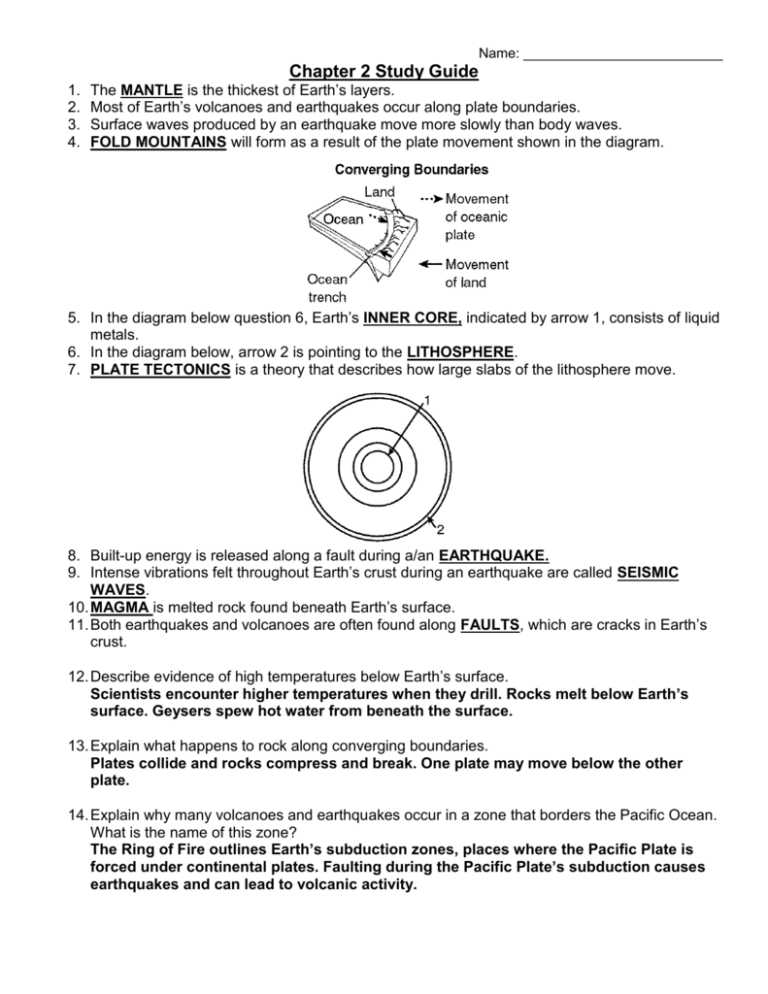
Name: __________________________ Chapter 2 Study Guide 1. 2. 3. 4. The MANTLE is the thickest of Earth’s layers. Most of Earth’s volcanoes and earthquakes occur along plate boundaries. Surface waves produced by an earthquake move more slowly than body waves. FOLD MOUNTAINS will form as a result of the plate movement shown in the diagram. 5. In the diagram below question 6, Earth’s INNER CORE, indicated by arrow 1, consists of liquid metals. 6. In the diagram below, arrow 2 is pointing to the LITHOSPHERE. 7. PLATE TECTONICS is a theory that describes how large slabs of the lithosphere move. 8. Built-up energy is released along a fault during a/an EARTHQUAKE. 9. Intense vibrations felt throughout Earth’s crust during an earthquake are called SEISMIC WAVES. 10. MAGMA is melted rock found beneath Earth’s surface. 11. Both earthquakes and volcanoes are often found along FAULTS, which are cracks in Earth’s crust. 12. Describe evidence of high temperatures below Earth’s surface. Scientists encounter higher temperatures when they drill. Rocks melt below Earth’s surface. Geysers spew hot water from beneath the surface. 13. Explain what happens to rock along converging boundaries. Plates collide and rocks compress and break. One plate may move below the other plate. 14. Explain why many volcanoes and earthquakes occur in a zone that borders the Pacific Ocean. What is the name of this zone? The Ring of Fire outlines Earth’s subduction zones, places where the Pacific Plate is forced under continental plates. Faulting during the Pacific Plate’s subduction causes earthquakes and can lead to volcanic activity. 15. How can fossils provide evidence to support the theory of plate tectonics? Fossils of tropical plants and animals may be found in polar regions; fossils of marine animals may be found in mountainous regions. 16. Describe the damage an earthquake can cause to a region. Compare that to the damage a volcano can do to the environment. Which is more dangerous? Earthquakes can level buildings, cause landslides, and generate huge ocean waves. Volcanoes can cover large areas with lava and volcanic ash and rocks, destroy forests, and emit dangerous gases into the atmosphere. Both are dangerous. 17. Describe one way this mountain may have formed. Magma rose to the surface but could not break through the crust completely. OR Faulting caused one plate to rise above another plate. OR Erosion by wind and rain rounded the surface over time. 18. List three ways scientists can learn more about what goes on beneath Earth’s surface. Scientists can drill holes; they can study lava, rock debris, and ashes from volcanoes; they can monitor the activity of natural geysers; they can set up seismographs; and they can design laboratory experiments to expose surface rock to intense heat and pressure. 19. This diagram shows that New City was near the epicenter of a recent earthquake. What are some of the possible effects of the earthquake in New City? Earthquakes might cause huge ocean waves that flood the city and destroy buildings and bridges. Earthquakes could re-route rivers and cause flooding. 20. Measurements indicate that the distance between Africa and South America is increasing. What do these measurements indicate about the portion of Earth’s crust between Africa and South America? Africa and South America are located on different plates. There is a diverging boundary between the two plates. Melted rock from the mantle is rising to the surface along the boundary.

